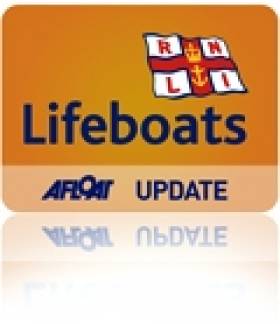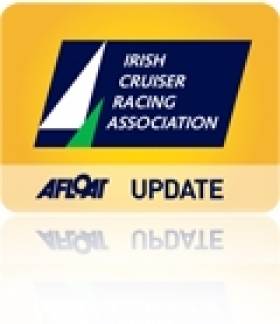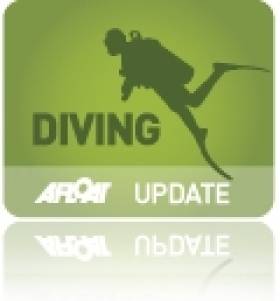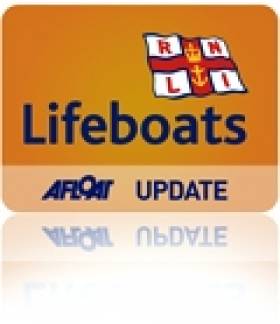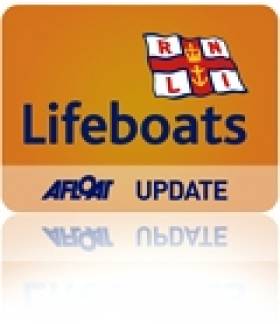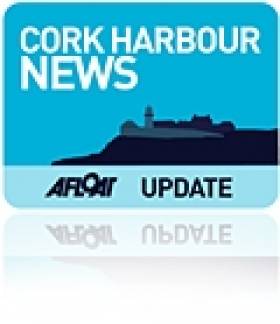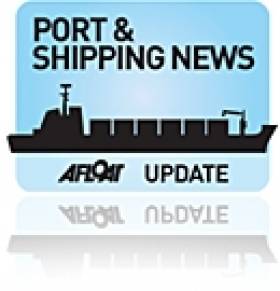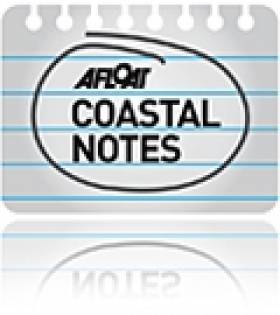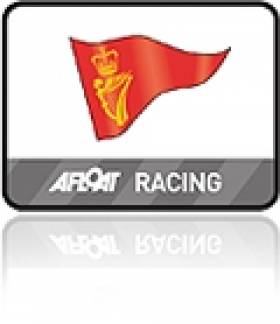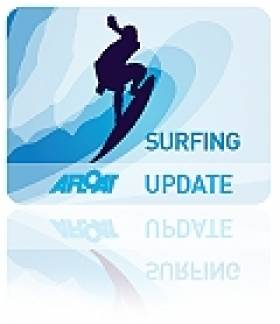Displaying items by tag: Cork Harbour
Flare Sighting Sparks Search off Cork Harbour
RNLI lifeboats from Ballycotton and Youghal responded to reports of white flare seen south of Ballycotton in East Cork tonight. The LE Emer was off Power Head, east of Cork Harbour, when the report was received and proceeded to the area also. Having spoken with a fishing vessel in the area they were satisfied there were no problems and the two Lifeboats were stood down.
Unconfirmed reports on Twitter said that the suspected flare sighting was in fact a streaming white light on a vessel.
Related Safety posts
RNLI Lifeboats in Ireland
Safety News
Rescue News from RNLI Lifeboats in Ireland
Coast Guard News from Ireland
Water Safety News from Ireland
Marine Casualty Investigation Board News
Marine Warnings
Big Turnout for Scora Meet (PHOTO Review HERE)
The members having been welcomed by Kinsale Vice Commodore Cameron Good, the meeting got under way with the first business of the evening being to elect a new Commodore. Vinnie O'Shea of Royal Cork Yacht Club was an unopposed unanimous choice and then took the chair. Jackie Kenefick of Schull Harbour Sailing Club was elected Executive Officer of the Association and Michael Murphy of RCYC and SHSC agreed to remain in his role of Treasurer and PRO. Also in attendance at the top table was Denis Kiely the hard working National Handicapping Officer.
The agenda item on class bands as was expected provoked lively input from the members, in fact the debate looked like going on for the evening such was the interest until the Chairman advised the members that he would shortly be calling a meeting with just one item on the agenda and that would be the class bands and handicapping.
A digital slide show of summer sailing was presented by Bob Bateman (SEE BELOW) just before there was a break for refreshments and then the eagerly awaited presentation of trophies and prizes took place. The prizes were presented by Sue McWilliam of McWiliam Onesails and Hugh Mockler of HM Yachts Ltd. and the SCORA prizes consisting of framed photographs from the 2010 sailing season were presented by the newly elected Commodore, Vinnie O'Shea.
German U-Boat Rediscovered in Cork Harbour
Scuba Divers have found a fully intact World War I U-Boat on the seabed just outside Cork harbour, some 93 years after it sank writes Timmy Carey.
During the First World War the menace provided by German U-Boats would prove deadly to the Allies and were responsible for sinking millions of tons of shipping; indeed German U-Boats almost changed the course of the war. Most allied ships sunk by U-boats were sunk by either torpedo, deck gunfire or explosives placed aboard the ship by U-boat crew. A smaller number of ships were also sunk by mine laying U-boats; one of these being UC42. On the 10th of September of 1917 UC42 was laying her deadly cargo of mines at the entrance to Cork harbour when a terrific explosion occurred which resulted in a grim death for all 27 German Submariners aboard.
As the submarine sank to the seabed the German submariners were trapped inside UC42, which would soon become their metal tomb.
On November 2nd of that year, hardhat divers from the Haulbowline dockyard dived the area and positively identified the U-boat as UC42, noting the stern damage to the submarine and the presence of the bodies of some of the German submariners. During 1918 the submarine was dived by Haulbowline and American divers in an effort to disarm all the mines and torpedoes still aboard, with USS Melville taking three of the mines. It was widely believed that in July 1919 divers using explosives from HMS Vernon torpedo school had destroyed the submarine with the remains being dispersed on the seabed by wire sweeps.
With the advent of scuba diving many divers have since searched for the scattered remains of UC42 around Cork harbour with no luck until a recent dive by two local divers Ian Kelleher and Niall O Regan descended a shot line to see the menacing sight of the hull of a German U-boat emerge from the shadows. Both divers were very surprised and ecstatic to find a fully intact World War I U-Boat in 27 meters of water just outside Cork harbour in good condition with little obvious explosive damage from the British naval dive team.
A local dive team of five divers had spent the previous 12 months carrying out a careful methodical search of the greater harbour area determined to find the remains of the submarine; their hard labours finally paying dividends when Niall and Ian identified the presence of the submarine. The dive team consisted of Ian Kelleher, Niall O Regan, Philip Johnston, Eoin Mc Garry and Timmy Carey.
Over the past few weeks the divers have carefully and methodically videoed and photographed the Submarine and taken various measurements to record the wrecks' condition. Over a number of dives the dive team carefully cleaned the growth from the propeller and after some methodical cleaning found the U-Boats number UC42 stamped into it; positively identifying the submarine.
As the submarine is a war grave and contains the remains of so many young German submariners the dive team also laid a plaque of remembrance, which was erected near the submarines propellers; to act as a memorial to the German submariners forever entombed in UC42. The plaque was kindly donated to the dive team by John O' Mahony of Complete Signs.
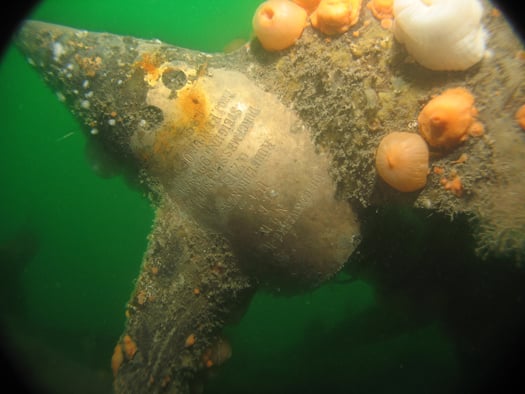
The image of the U-Boats propellor with the markings identifying the U-Boat. Photo: Timmy Carey
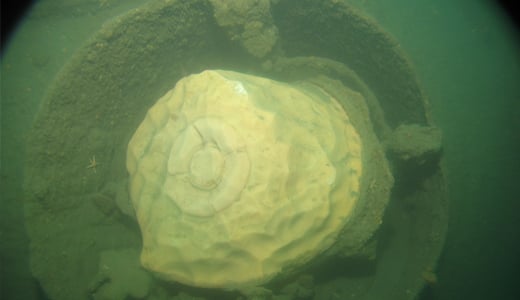
A badly decayed mine on UC42 still in the mine chute. Photo: Timmy Carey
Fisherman Still Missing off Cork Harbour
UPDATE: Ballycotton RNLI lifeboat has launched this morning to help search for a missing person off Ringabella Bay in Cork Harbour. The alarm was raised when one fisherman managed to swim ashore shortly before 11am and alert the emergency services that another man was still in the water. A major air and sea search is currently taking place in the area for the missing fisherman. Ballycotton RNLI lifeboat, Crosshaven RNLI lifeboat, Coastguard helicopter Rescue 117 and the naval service have gathered in the area and a coordinated search is taking place.
Related Safety posts
RNLI Lifeboats in Ireland
Safety News
Rescue News from RNLI Lifeboats in Ireland
Coast Guard News from Ireland
Water Safety News from Ireland
Marine Casualty Investigation Board News
Marine Warnings
Ballycotton in Search for Missing Person
Ballycotton RNLI lifeboat, Austin Lidbury, has launched to assist in a search for a missing person off Ringabella Bay, near Cork harbour. The alarm was raised when a companion swam ashore and alerted the emergency services. Ballycotton RNLI lifeboat's eta is 11:40.
Related Safety posts
RNLI Lifeboats in Ireland
Safety News
Rescue News from RNLI Lifeboats in Ireland
Coast Guard News from Ireland
Water Safety News from Ireland
Marine Casualty Investigation Board News
Marine Warnings
O'Shea Fourth in Moth Worlds Silver Fleet
Ex-Pat Michael O'Shea has finished fourth in the silver fleet of the Moth world championships staged in Belmont, Australia.
The class promises to be the next hot thing because of its high speed through the use of foils that keep the hull clear of the water. The class has yet to be established in Ireland.
The Cork sailor set a personal best of 27.5 knots (10 second average) in one of the races.
O'Shea, a former 49er and Hobie 18 sailor from Monkstown, is now living in Sydney and was the sole Irish competitor at the Moth event.
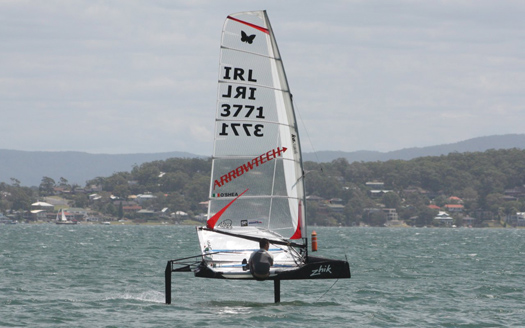
Michael has heard that heard there are a couple of boats in Dublin and is keen to help out anyone who is looking to get into the class with tips and tricks.
Watch the interview with Michael below. More pics of Michael HERE.
His next target on water is to try and hit 30 knots, not bad in a sailing dinghy! but his target ashore is to spread the word of these great advances back home.
"I'm looking to see if I can promote the class in Ireland and get some other sailors interested. The next worlds (2012) are in Lake Garda, somewhat easier to get to fro Ireland, he told Afloat.ie.
And it appears the boats are easily transportable- thanks to Ryanair - click HERE
Fastnet Line Cancel Tonight's Sailing
Operators of the Cork-Swansea route, Fastnet Line regret to announce that tonight's (13 January) sailing from Cork to Swansea is cancelled. The company has cited technical reasons for the cancellation of the sailing. The 10-hour route linking Munster with South Wales is served by the M.V. Julia.
Fastnet Line are contacting all passengers to assist in making re-bookings or refunds. Those wishing to contact the ferry operators' reservation team for further information can contact the details listed below.
The Julia is to go into dry-dock this week in Swansea. The vessel will remain in Swansea while undergoing annual maintenance up to and including Wednesday 9th February. Her first sailing will be at 20.30hrs from Swansea to Cork on Wednesday 9th February 2011.
To contact the Fastnet Line Irish Reservations Office Tel: +353 (0) 21 4378892 (Open Monday – Friday) 9.00 am - 6.00 pm
To contact the UK Reservations Office Tel: 0844 576 8831
(Open Monday – Thursday) 8.00 am - 8.00 pm
(Open Friday) 8.00 am - 7.00 pm
(Open Saturday and Sunday) 9.00 am - 6.00pm
For further information logon to www.fastnetline.com
Ireland's Fog Signals to Fall Silent
Nine lighthouses operated directly by the authority in the Republic and Northern Ireland, along with several others run by harbours or local authorities - including Cork Harbour and Dun Laoghaire - will sound their last fog signals tomorrow.
Capt Kieran O'Higgins of the Commissioners of Irish Lights said the plan was notified to mariners in September 2010, and was taken due to "advances in marine navigation technology".
However Capt Michael Coleman, formerly of the Jeanie Johnston, did not think the plan was adequately publicised. He also noted now many smaller boats without advanced equipment that navigate by charts often reply on fog signals for safe passage.
Even bigger boats that navigate by GPS could be affected in dangerous situations if they suffer a power failure, he said.
On Afloat's official Facebook page, Cork resident Denis Cronin commented: "If this is the last night the [Cork Harbour] fog horn blows, it's a sad night.
"The tune she blows is a comfort for all those at sea and for all those at home for been home safely."
What do you think of the end of Ireland's fog signals? HAVE YOUR SAY on our facebook page HERE!
BBC Article HERE
Irish Times Article HERE
National 18s Aim for Big Turn-Out
The club hopes over 50 boats will participate across three separate divisions:-
Ultimates - The modern fibreglass boats of the racing fleet.
Penultimates - The older fiberglass boats that have been hiding in garages waiting to be taken out for the 2011 championship.
Classics - The beautiful wooden clinker-built boats that have re-surfaced in Crosshaven, West Cork and further afield in recent years.
More on this class by Tom MacSweeney HERE
Cork Surfers Brave More Than The Cold!
There'a always a sliver lining around our coast. Whats a problem for some can be turned to advantage for others. A reef that sailors avoid during racing on coastal courses from Royal Cork presented the perfect setting for some Cork Harbour surfers at the weekend writes Brian Carlin.
A local hazard, the reef is situated approximately a mile west of the entrance to Cork Harbour, dangerous at high tide as most of the reef is immersed. SCROLL DOWN FOR IMAGES.
Surfers took advantage of the direct southerly swell, the surfers, Mark Barry, John Powell and Brian Hartnett, explained only in these conditions is the reef surfable. The trio enjoyed the best of the January sunshine and gave the shoreline spectators a show worth watching. Photos by Brian Carlin.

